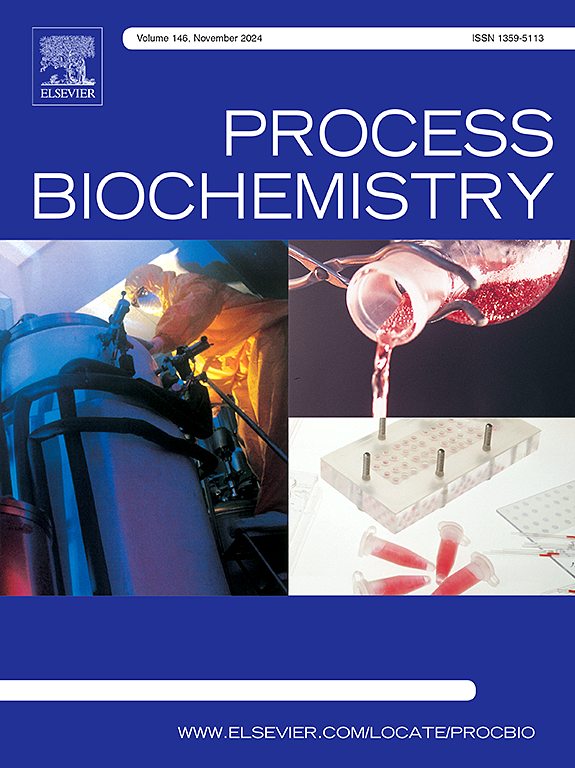Phosphorus and sulphur affecting the growth, nutrient uptake and amino acids composition in Dunaliella salina
IF 3.7
3区 生物学
Q2 BIOCHEMISTRY & MOLECULAR BIOLOGY
引用次数: 0
Abstract
The potential of microalga Dunaliella salina as a protein source and in bioremediation application is still underdeveloped, despite its known carotenoids overproduction. This study focused on investigating the effects of phosphorus (P) and sulphur (S) concentrations on the biomass growth and essential amino acids profile of D. salina PLY DF15 (CCAP 19/41). Additionally, its nutrient removal capacity was analysed in a bioremediation context. From all tested P and S concentrations, D. salina resulted in high-quality protein with essential amino acid index (EAAI) between 1.6 and 1.7 (EAAI ≥ 1 meets FAO/WHO standard) with little variations from all P and S concentrations. In a bioremediation context, D. salina also showed great potential for nutrients removal and recovery with high adaptability to varying nutrient conditions, with overall more than 80 % and 100 % nitrogen (N) and P recovery, respectively. The full recovery of S however was only achieved at lower S levels. Overall D. salina shows great potential in providing high-quality protein for human consumption using economic and sustainable cultivation approach.
磷和硫对盐藻生长、养分吸收和氨基酸组成的影响
尽管已知盐藻类胡萝卜素产量过剩,但其作为蛋白质来源和生物修复应用的潜力仍不发达。本研究主要研究了磷(P)和硫(S)浓度对D. salina PLY DF15 (CCAP 19/41)生物量生长和必需氨基酸谱的影响。此外,在生物修复环境中分析了其去除营养物质的能力。从所有测试的P和S浓度中,盐藻获得的优质蛋白质必需氨基酸指数(EAAI)在1.6 ~ 1.7之间(EAAI≥1符合FAO/WHO标准),所有P和S浓度变化不大。在生物修复环境下,盐藻也显示出巨大的养分去除和恢复潜力,对不同养分条件具有很高的适应性,氮(N)和磷(P)的总体回收率分别超过80% %和100% %。然而,只有在较低的S水平下,S才能完全恢复。总体而言,采用经济和可持续的种植方法,盐藻在为人类提供优质蛋白质方面具有很大的潜力。
本文章由计算机程序翻译,如有差异,请以英文原文为准。
求助全文
约1分钟内获得全文
求助全文
来源期刊

Process Biochemistry
生物-工程:化工
CiteScore
8.30
自引率
4.50%
发文量
374
审稿时长
53 days
期刊介绍:
Process Biochemistry is an application-orientated research journal devoted to reporting advances with originality and novelty, in the science and technology of the processes involving bioactive molecules and living organisms. These processes concern the production of useful metabolites or materials, or the removal of toxic compounds using tools and methods of current biology and engineering. Its main areas of interest include novel bioprocesses and enabling technologies (such as nanobiotechnology, tissue engineering, directed evolution, metabolic engineering, systems biology, and synthetic biology) applicable in food (nutraceutical), healthcare (medical, pharmaceutical, cosmetic), energy (biofuels), environmental, and biorefinery industries and their underlying biological and engineering principles.
 求助内容:
求助内容: 应助结果提醒方式:
应助结果提醒方式:


